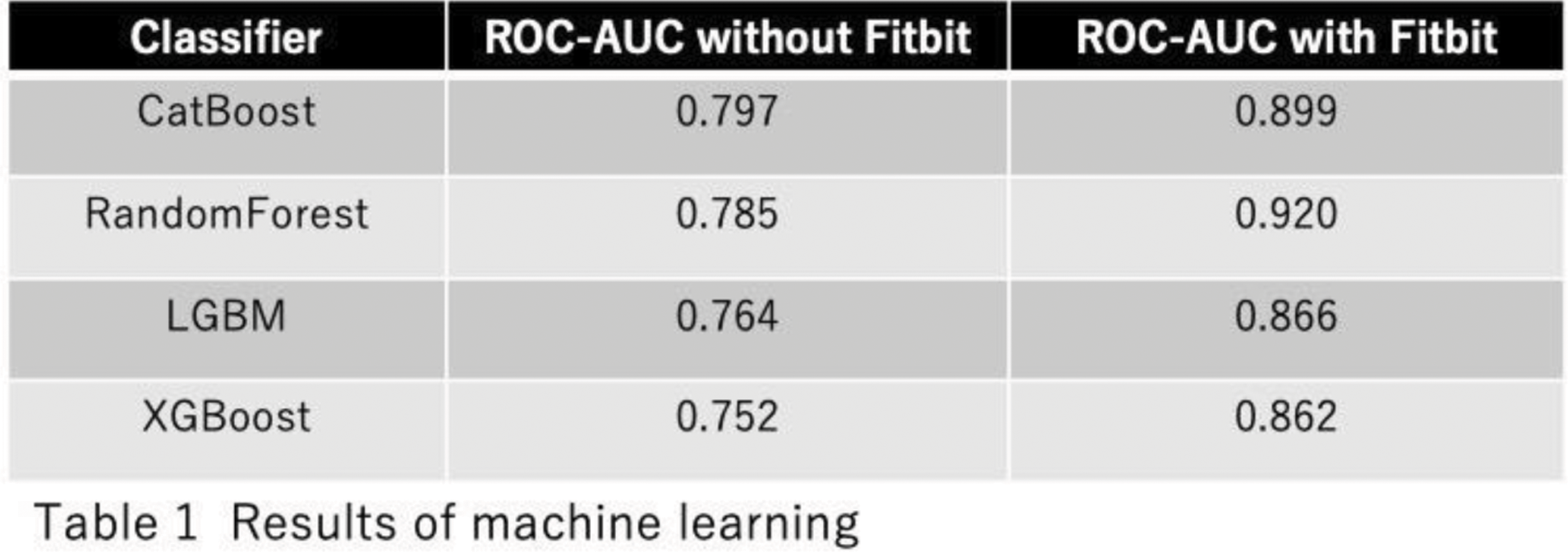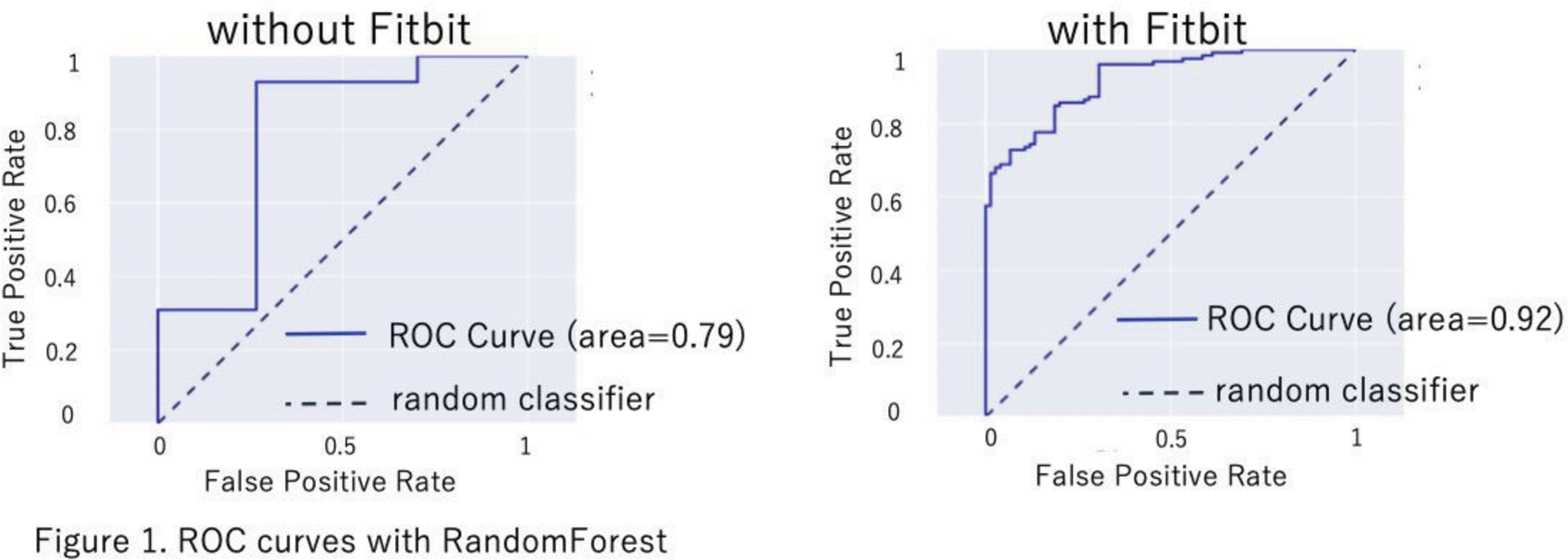

Background: Recent drug development and sophisticated treatment regimens have achieved good efficacy and tolerability in the acute phase of patients with systemic lupus erythematosus (SLE), whereas the maintenance treatment regimens are not yet standardized [1]. Based on the principles of treat-to-target, physicians try to assess disease activity at each clinic visit and adapt the pharmacological interventions according to the patient’s backgrounds. However, safe drug tapering/withdrawal and early recognition of relapse signs remain challenging clinical issues. Established clinical indices do not always provide a complete picture of the disease activity. Recent studies have demonstrated that Patient-Reported Outcomes (PROs) may reflect subjective symptoms that cannot be detected by conventional examinations. Recently, wearable devices, such as wrist-worn devices, have become capable of sensing health-related data, such as physical activity, heart rate, and sleep status, non-invasively and continuously. Several studies have already demonstrated the usefulness of these data for management in cardiology and mental health disorders [2, 3]. Additionally, the disease activity in rheumatoid arthritis was associated with sleep quality sensed by wrist-worn devices [4]. Since the nature of SLE is autoimmunity and chronic inflammation, the disease activity must spontaneously and continuously fluctuate, similar to other diseases. We thus considered the possibility of continuously evaluating SLE activity by combining health-related data to PROs.
Objectives: To develop a predictive model for detecting the achievement of Lupus Low Disease Activity State (LLDAS), one of the potential therapeutic targets.
Methods: We conducted a cohort study at Tokyo Medical and Dental University Hospital (currently Institute of Science Tokyo Hospital) from July 2023 to September 2024. Patients aged 15 years and older were enrolled with a diagnosis of SLE based on the 1997 ACR revised criteria or the 2019 EULAR/ACR Classification Criteria. We collected treatment histories and laboratory data from medical records. Subjective symptoms were obtained via a visual analog scale and the Lupus PRO questionnaire. The achievement of LLDAS was defined by the physician at the clinical visit. For some patients, a wrist-worn wearable device (Fitbit Inspire 3), was provided according to their preferences. The health-related data, including resting heart rate, sleep status, and step counts, were collected from the SelfBase platform (Tech Doctor, Inc.). Periods with zero step counts were regarded as resting. These data were averaged daily for 7 days before and after the clinical visit. The health-related data were blinded to the physicians during the study period. For machine learning, we used four well-established machine learning Methods: Random Forest, CatBoost, XGBoost, and LGBM.
Results: Among 274 SLE patients, 112 agreed to wear the Fitbit. While patients’ personal interests in the wearable device might differ based on their background, no difference was found in gender, age, or the achievement of LLDAS between the Fitbit-wearing group and the non-Fitbit-wearing group, indicating that Fitbit wearers in this cohort did not represent a specific subset of population. Then, we investigated whether a prediction model could identify LLDAS achievement. We evaluated two prediction models using machine learning methods. The first model was generated using the combination of “clinical indices + treatment details + PRO,” and the second one incorporated these three variables plus Fitbit features (Table 1 and Figure 1). In all four machine learning methods, the ROC-AUC values were higher when Fitbit features were added, indicating that health-related information increased the prediction accuracy. Notably, SHAP values, which explain how each feature influences the model’s predictions, highlighted the following key features (in order of importance): glucocorticoid dosage on the previous visit, warfarin usage, anti-dsDNA antibody titers, pain domain score from LupusPRO, and resting heart rate value from Fitbit.


Conclusion: We developed a highly accurate prediction algorithm to determine LLDAS achievement. Both PROs and Fitbit features were influential in model construction. Moreover, Fitbit features were beneficial for improving prediction accuracy. These findings suggest that wrist-worn wearable devices could provide digital biomarkers for accurately assessing disease activity in SLE.
REFERENCES: [1] Fanouriakis A, Kostopoulou M, Andersen J, et al. EULAR recommendations for the management of systemic lupus erythematosus: 2023 update Annals of the Rheumatic Diseases 2024;83:15-29.
[2] Hughes A, Shandhi MMH, Master H, et al . Wearable Devices in Cardiovascular Medicine. Circ Res. 2023 Mar 3;132(5):652-670.
[3] Robinson T, Condell J, Ramsey E, et al . Self-Management of Subclinical Common Mental Health Disorders (Anxiety, Depression and Sleep Disorders) Using Wearable Devices. Int J Environ Res Public Health. 2023 Feb 1;20(3):2636.
[4] Izumi K, Higashida-Konishi M, Saito S, et al . AB0606 DIGITAL BIOMARKER FOR DISEASE ACTIVITY IN RHEUMATOID ARTHRITIS USING WRIST-WORN WEARABLE DEVICE-ACQUIRED SENSING DATA: A MULTICENTER SINGLE-ARM PROSPECTIVE STUDY (INTERIM REPORT) Annals of the Rheumatic Diseases 2024;83:1587-1588.
Acknowledgements: This research was supported by research grants from Japan Agency for Medical Research and Development (AMED), and by the Cooperation Program between TMDU, Sony Corporation and Sony Group Corporation.
Disclosure of Interests: Tomoko Niwano: None declared, Taiki Yamaguchi: None declared, Daisuke Kawata: None declared, Yui Takeshita: None declared, Shunsuke Takagi: None declared, Seiya Oba: None declared, Hirokazu Sasaki Abbvie, Asahi Kasei Pharma, and Mitsubishi Tanabe Pharma, Taisho Pharmaceutical Co., Ltd and Kissei Pharmaceutical Co., Ltd., Akio Yamamoto: None declared, Natsuka Umezawa Abbvie Japan Co., Ltd., Astellas Pharma Inc. Boehringer Ingelheim, Taisho Pharmaceutical Co., Ltd., Kyowa Kirin Co., Ltd., Tetsuya Saito: None declared, Hisanori Hasegawa AbbVie GK, AbbVie GK, ONO PHARMACEUTICAL CO., LTD, GlaxoSmithKline plc, Eisai Co., Ltd, TAISHO PHARMACEUTICAL Co., Ltd., AstraZeneca K.K., Japan Research Foundation Clinical Pharmacology, Naoki Kimura Eisai Co., Ltd., AbbVie GK, ASAHI KASEI PHARMA CORPORATION, Novartis Pharma K.K., Astellas Pharma Inc., AstraZeneca, GlaxoSmithKline K.K., CHUGAI PHARMACEUTICAL CO., LTD., Taisho Pharmaceutical Co., Ltd., CHUGAI PHARMACEUTICAL CO., LTD., UCB Japan Co., Ltd., CSL Behring K.K., AYUMI Pharmaceutical Corporation, Japan Blood Products Organization, Novartis Pharma K.K., Taisho Pharmaceutical Co., Ltd., Nobelpharma, ASAHI KASEI PHARMA CORPORATION, AbbVie GK, Hideyuki Iwai Eisai Co., Ltd., Astellas Pharma Inc., Taisho Pharmaceutical Co., Ltd., ASAHI KASEI PHARMA CORPORATION, CHUGAI PHARMACEUTICAL CO., LTD., UCB Japan Co., Ltd., ONO PHARMACEUTICAL CO., LTD, Mitsubishi Tanabe Pharma Corporation, Takeda Pharmaceutical Co., Ltd., Pfizer Japan Inc., Gilead Sciences, Inc., Bristol-Myers Squibb K.K., DAIICHI SANKYO, INC., Astellas Pharma Inc., ASAHI KASEI PHARMA CORPORATION, Taisho Pharmaceutical Co., Ltd., Mitsubishi Tanabe Pharma Corporation, Keita Mochizuki TechDoctor, Inc., Toshikazu Fukami TechDoctor, Inc., Keisuke Izumi Asahi Kasei, Chugai, Abbvie, Eisai, Gilead Sciences, Teijin Pharma, TechDoctor, Inc., Kazumichi Minato TechDoctor, Inc., Ryuji Koike Eisai Co., Ltd., Zenyaku Holdings Co., Ltd., Shinsuke Yasuda Abbvie, Asahi Kasei Pharma, Chugai Pharmaceutical, Eisai, Eli Lilly, GlaxoSmithKline, Mitsubishi Tanabe Pharma, and Ono pharmaceutical, Eisai, ImmunoForge, Novartis and Otsuka seiyaku, Asahi Kasei Pharma, Ayumi Pharmaceutical Corporation, Chugai Pharmaceutical, Nippon Boehringer Ingelheim Co., Ltd, and Taisho Pharmaceutical Co., Ltd, Tadashi Hosoya Abbvie, Asahi Kasei Pharma, Eisai, Mitsubishi Tanabe Pharma, and Daiichi Sankyo, Sony Corporation and Terumo life science foundation.
© The Authors 2025. This abstract is an open access article published in Annals of Rheumatic Diseases under the CC BY-NC-ND license (